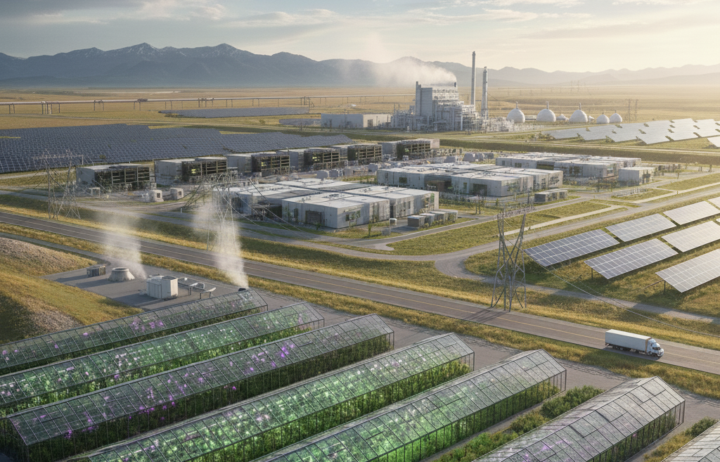Hydroponics vs. Aquaponics: Choosing the Right Indoor Farming Method
Indoor farming is becoming more popular, and as more individuals and businesses try to grow their own plants and herbs, it can be a steep learning curve. With various options for methods, plant types, and growing systems, there are a few things to consider before starting your indoor farming journey.
The two systems are hydroponics and aquaponics, and understanding the cost, setup, and operational differences between them is crucial for farmers to decide which method suits their needs.
What are Hydroponics and Aquaponics?
Hydroponics is a soil-free agricultural technique that involves growing plants in a water-based, nutrient-rich solution. With a history spanning thousands of years, this method supplies essential nutrients to plants through water instead of soil.
Aquaponics shares similarities with hydroponics, such as growing plants in nutrient-rich water without soil. The distinction lies in nutrient sourcing. For aquaponics, fish waste provides nutrients, which beneficial bacteria in a biofilter convert into nitrates, a key nitrogen source for plants. This process not only nourishes the plants but also purifies the water for the fish.
Hydroponic and Aquaponic System Design
The primary difference between hydroponic farming and aquaponic farming is system design and operational components. Aquaponics requires filtration to capture fish solids and a zone for bacteria that convert waste into plant nutrients.
Plant growing methods also differ between the systems. While deep water rafts and ebb and flow systems suit both, nutrient film technology (NFT) poses challenges in aquaponics due to frequent clogging. In contrast, NFT is prevalent in hydroponics.
Startup and Operating Costs
Initial costs for hydroponics and aquaponics are similar, though aquaponics entails extra components like filtration, aeration, and fish. The costs for fish can offset the expenses for nutrients in hydroponics. Operating costs for aquaponics are slightly higher due to the need for additional air pumps.
Acclimation or Cycling Period
Both systems require a stabilization period before reaching full productivity. Hydroponics needs nutrient solution cycling, while aquaponics requires time for beneficial bacteria development in the filter media. This acclimation can take 6 to 8 weeks, potentially shorter in warmer water.
Nutrients
Hydroponic farming demands regular addition of artificial fertilizers to replenish nutrients, while aquaponic farming benefits from a natural nutrient supply from fish waste, supplemented by commercial fish food.
Ongoing Maintenance and Waste
Aquaponics generally requires less frequent water quality and nutrient monitoring than the daily checks needed in hydroponics. Hydroponic systems must be regularly drained to prevent nutrient buildup, while aquaponics systems, if adequately maintained, don’t require flushing.
Disposal of hydroponic wastewater can impact natural water bodies and wastewater treatment operations, whereas wastewater from aquaponics is minimal and can be repurposed as fertilizer.
Choosing Hydroponics versus Aquaponics
The choice between hydroponics and aquaponics should align with the farmer’s preferences and goals. Both systems offer unique benefits, contribute to the growing popularity of soilless agriculture, and present distinct advantages over traditional soil-based gardening.
Learn More About Hydroponics with NuLeaf Farms
Regardless of your preferred farming method, the NuLeaf Farms team can provide guidance for all your vertical farming needs. From our grow-at-home systems to commercial farms, we can help individuals and businesses achieve better sustainability.
If you want to become a pro at hydroponics, NuLeaf Farms offers our Introduction to Hydroponics Workshop, held weekly at our Calgary farm.








